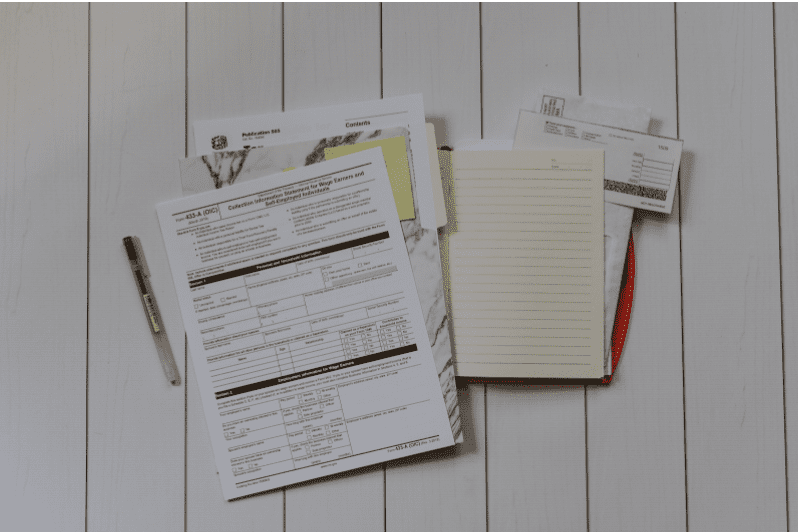Income tax, VAT, business rates, or national insurance taxes are an unavoidable part of life for everyone and need to be taken into consideration. However, it’s only when you manage your own business that you realise just how complicated things can get.
Assuming all goes well, you’ll also need to consider corporation tax.
Being aware of your taxes is one of the most important aspects of running a small business. For your business to keep running, taxable income must be computed and paid. There is no need to search farther if you want to learn more about corporation tax for your company. Our brief guide contains all the details you require to successfully pay corporation tax and calculate how much corporation tax is!
What is corporation tax?
UK companies must pay corporation tax on whatever earnings they make. The current corporation tax rate in the UK is now 19%, however in April 2023 this is due to rise to 25%, but only for businesses with profits of more than £50,000. It is calculated and paid annually based on your corporation tax accounting period, which is often the same as your company’s financial year.
Everyone hates paying taxes, but if you’re paying corporate tax, you’re doing reasonably well because your company is making money.
Since there is no tax-free corporate tax allowance, all profits are subject to taxation. But you don’t pay corporation tax if your business isn’t profitable. It’s that easy.
Who pays corporation tax?
No matter how small, any limited company is subject to paying Corporation Tax.
Corporation Tax is charged on corporate taxable profits as well as any income your company receives from investments or the sale of capital assets.
Each year, you must pay the tax to HMRC, and you have nine months from the end of your financial year to do so.
This implies that your business is responsible for figuring out the amount of Corporation Tax due and paying it to HMRC in advance of filing your company tax return (CT600), which must be submitted to HMRC within 12 months of the end of the financial year.
How to calculate Corporation Tax for small businesses
Accurate bookkeeping and a working knowledge of accounting are required for corporation tax.
In order to lower the amount of Corporation Tax your company must pay, you must also be aware of the tax reliefs from which your company might benefit.
If you need assistance preparing your corporation tax bill, it is preferable to consult a trusted business accountant.
Calculate sales and income
To compute corporation tax, you must set up a profit and loss account.
This should include any sales revenue generated by your company as well as any interest accrued, such as from a business savings account.
Calculate overheads
Your trading income can be subtracted from other business costs to determine the profit your company makes.
Remember to subtract all permitted expenses and deductions from the trading income in order to avoid paying more Corporation Tax than is necessary.
However, you are only permitted to deduct expenses that HMRC considers to be “wholly and solely” for business purposes.
You most certainly qualify for a claim for any item you purchased expressly for your company and for which you don’t receive any personal use.
Costs of sales typically include materials, postage, packing, salaries, insurance, and accounting expenses.
Capital allowances and depreciation
Capital allowances are costs incurred by your organisation when purchasing fixed assets like furniture, office equipment, and plant equipment that will be a part of it for a number of years.
The asset’s worth will decrease over time. The majority of capital asset purchases will qualify for Annual Investment Allowance tax relief for small business corporation tax computations.
The simplest method for determining how long to depreciate products is to distribute the cost over the anticipated number of years that the equipment will be used in your firm.
See the table below for some average depreciation periods for some typical corporate assets:
- Computer equipment 3 – 4 years
- Office desk / chairs 4 – 5 years
- Fixtures and fittings 8 – 10 years
As a result, fixed asset additions up to £1,000,000 per year can provide an immediate tax deductions helping to lower the amount of profit subject to Corporation Tax.
Calculate and pay your corporation tax
The profit value that is subject to Corporation Tax is determined by subtracting any capital allowances from the profit before tax and adding back any non-deductible expenses like depreciation and client entertaining expenses.
Multiply the profit by 19 percent, to determine the amount of Corporation Tax that must be paid since tax would be owed at a rate of 19% on earnings.
Before submitting your company tax return, it’s usually a good idea to get accounting assistance from a knowledgeable tax professional because there are a whole range of additional deductions and reliefs which the business may be eligible for, after all every business is unique.
Looking for expert accounting support with your small business taxes?
At Raw Accounting, we are more than happy to advise on Corporation tax liability or any other tax related queries. We specialise in small business tax and accounting, with always your businesses best interests at heart.
Contact us today to see how we can help you.
Corporation tax FAQs
How much is corporation tax?
If your company is a limited company, you will need to pay corporation tax on all of your earnings, including those from trading and the sale of securities or other assets. The rate is 19% of your net earnings at the moment.
Is corporation tax calculated on gross or net profit?
Using your net profits as a base, determine your corporate tax obligation. This calculator will help you determine the amount of corporation tax your limited company will be required to pay depending on your net earnings before taxes.






